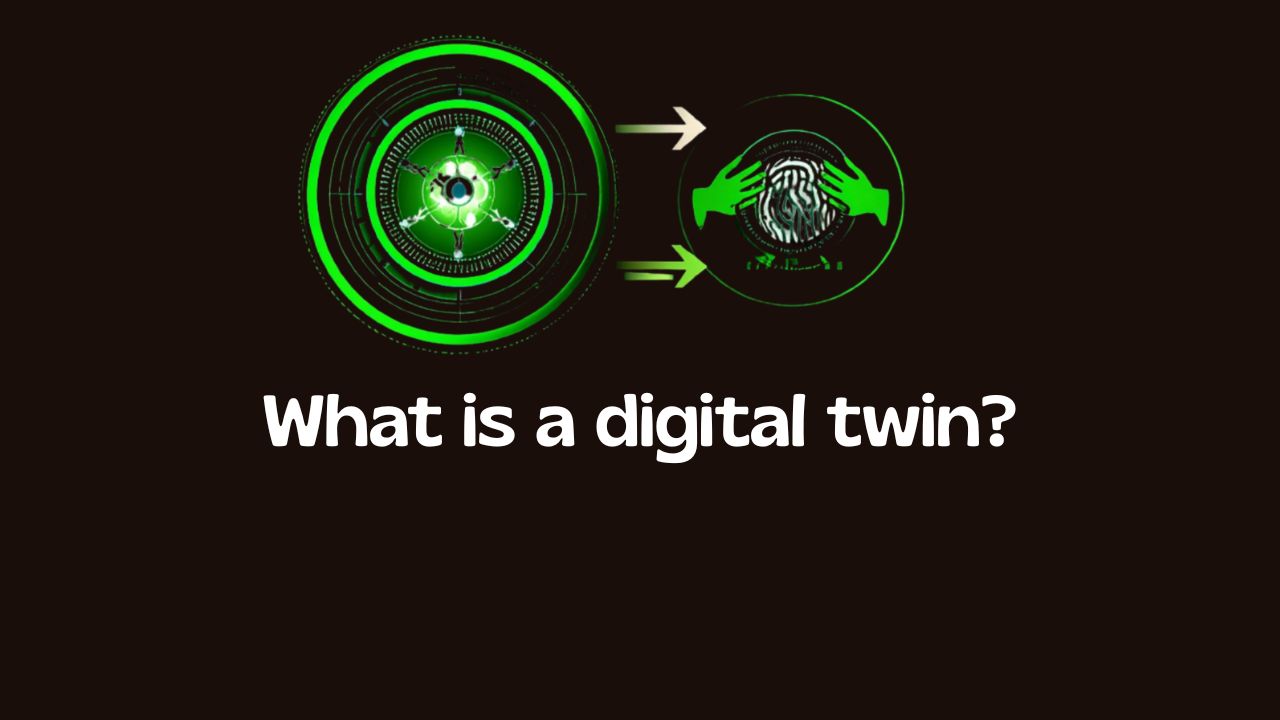
What is a digital twin?#
A digital twin is a virtual representation of a real-world entity or process, created to simulate its behavior and performance. It consists of three main components: representation of the physical entity itself, the digital model that represents it, and the data that links the two (original and twin). Keep in mind the data is generated by model based on the representation of the physical entity. This technology allows users to monitor, analyze, and optimize the performance of physical objects or systems in real-time by providing insights based on data collected from sensors and IoT devices [1][2][3].
Is a digital twin similar to a hologram?#
While both digital twins and holograms involve representations of objects, they differ significantly in purpose and functionality. A digital twin is a data-driven model that simulates the behavior of a physical counterpart, focusing on analysis and optimization. In contrast, a hologram is a three-dimensional visual representation created using light patterns, primarily used for display purposes without analytical capabilities. Thus, digital twins are more about real-time data integration and predictive analytics, while holograms are about visualizing objects [1].
How is a digital twin created, and where does it get its data?#
Digital twins are created using modeling software such as CAD (Computer-Aided Design) tools during the design phase of a product. They are continuously updated with real-time data from sensors connected to the physical entity, often through IoT technology. This data can include various operational metrics like temperature, pressure, or usage patterns. The integration of this data allows the digital twin to accurately reflect the current state of its physical counterpart [1][4].
If an event happens in the digital twin, what does it represent in the real world?#
When an event occurs in a digital twin, it signifies a change or action related to its physical counterpart. For example, if a digital twin of a manufacturing machine detects an anomaly in performance, this event indicates that there may be an issue with the actual machine. The digital twin acts as a proxy for monitoring conditions and predicting outcomes based on real-time data, allowing for proactive management of potential problems in the physical entity [2][3].
Can multiple digital twins exist for the same event, each focusing on different aspects?#
Yes, multiple digital twins can be created for the same event, each focusing on different aspects such as security, performance metrics, audience engagement, etc. This allows organizations to analyze various elements simultaneously and make informed decisions based on comprehensive insights from different perspectives [2][3].
What are AR, VR, MR, and XR?#
- Virtual Reality (VR): Immerses users in a completely digital environment where they can interact with virtual spaces using headsets.
- Augmented Reality (AR): Overlays digital content onto the real world through devices like smartphones or AR glasses.
- Mixed Reality (MR): Combines elements of both VR and AR to allow interaction between real-world and virtual objects in real-time.
- Extended Reality (XR): An umbrella term that encompasses all immersive technologies including VR, AR, and MR [1][3].
How are digital twins connected to AR, VR, MR, and XR technologies?#
Digital twins can enhance AR and MR experiences by providing real-time data overlays that inform users about physical objects or systems. For instance, technicians can use AR to visualize maintenance instructions overlaid on machinery while accessing data from its digital twin. In VR environments, digital twins can simulate entire systems or processes for training or operational planning purposes. XR serves as a broader framework within which these interactions occur [1][4].
What are the key industries using digital twins, and what are their applications?#
Digital twins are utilized across various industries including:
- Manufacturing: For monitoring equipment performance and optimizing production processes.
- Healthcare: To create patient-specific models for personalized treatment plans.
- Transportation: For tracking vehicle performance and optimizing logistics operations.
- Energy: To monitor power generation systems like wind turbines or solar panels. These applications help organizations improve operational efficiency and reduce costs [2][3].
What are the benefits and limitations of using digital twins?#
Benefits:
- Improved decision-making through real-time insights.
- Enhanced operational efficiency by predicting failures before they occur.
- Cost savings by optimizing maintenance schedules and reducing downtime.
Limitations:
- High initial investment in technology infrastructure.
- Complexity in integrating various data sources.
- Dependence on accurate data; poor data quality can lead to misleading insights [2][4].
In summary, what exactly is a digital twin?#
A digital twin is a sophisticated virtual model that represents a physical object or system in real-time. It integrates continuous data from sensors to simulate behavior accurately and predict outcomes. This technology is pivotal for optimizing performance across various industries by enabling proactive management and informed decision-making based on comprehensive insights derived from both historical and real-time data.
Current date: Tuesday, January 07, 2025
Citations:#
[1] https://www.techtarget.com/searcherp/definition/digital-twin
[2] https://www.challenge.org/insights/what-is-digital-twin/
[3] https://www.sw.siemens.com/en-US/technology/digital-twin/
[4] https://www.coursera.org/articles/digital-twin


Comments: